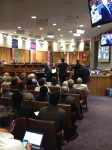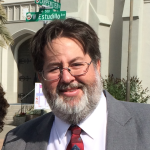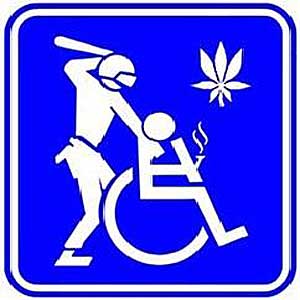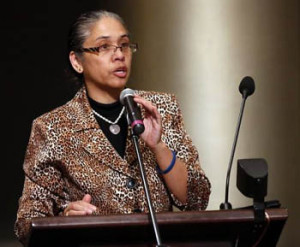These are Mike Katz-Lacabe notes/tweets on the July 28th San Leandro City Council meeting on the Marina/Shoreline development and expansion of the San Leandro Police Department headquarters. These notes are provided because the Council no longer produces minutes of its meetings. Once again, Mike Katz-Lacabe and Mia Ousley were the only two City Council candidates present at the meeting.
San Leandro City Council work session on shoreline fund and police space needs starts now – without Councilmember Michael Gregory.
 Marina
Marina
Dredging needed for channels to San Leandro Marina every 4 years and berths every 8 years.
Siltation rate for San Leandro marina is 8 to 12-inches per year.
Harbor operations at San Leandro marina have a net loss of more than $400k per year. Fund is $2.5 million in the hole.
Shoreline operations generated $335,000 in 2013-14. Includes tax generated by San Leandro Marina Inn and restaurants. $94k expected this year.
San Leandro shoreline fund expecting $84k in net revenue this year. Outstanding debt is nearly $9 million.
Amortized over next 10 years, the annual unfunded liability for the San Leandro Marina is $3.2 million, including dredging of $1.5 million.
130 of 462 berths at the San Leandro Marina are occupied. 26 berths are occupied by San Leandro residents. 11 are live-aboards
In April/May 2012, average depth in channel to San Leandro marina was 5.9 feet, according to Army Corps soundings. 3.9 feet at fuel dock
San Leandro shoreline fund debt is about $1.9 million for Cal Boat Loan and $7 million to city’s general fund.
Download tonight’s presentation on the status of San Leandro’s shoreline fund.
Earliest that construction on San Leandro Marina project could begin is estimated at February 2017.
Projected lifespan of San Leandro boat harbor without dredging is another year or two before boats have problems getting in and out.
Mayor Stephen Cassidy: Why is there no federal money for dredging? A: Disappearance of earmarks & Army Corps budget priorities.
San Leandro city staff on possible ferry: Sea of parking with a dock. Might not be seen as a good thing by residents.
Dwight Pitcaithley: Costs are formidable. “It’s not going to be an easy thing.” “You could privatize the channel.” Marina needs a benefactor
Dwight Pitcaithley is making a documentary on the San Leandro Marina that he will put on YouTube.
San Leandro Marina supporter: “The decision is pretty much made… The Marina is sentenced to death.” Put this on the ballot.
San Leandro still has an estimated $2.5 million expense for disposing of dredge spoils from 2009, when the Marina was last dredged.
Bella Comelo Why cannot the Marina issue be put on the ballot? Let the people decide.
Note that dredging (or lack thereof) of the San Leandro Marina only affects the boat harbor. Park and other areas unaffected.
San Leandro Councilmember Diana Souza: most people want to keep the marina. “Everyone of us would love to have the marina there.”
San Leandro Councilmembers Souza, Prola, and Lee seem resigned to the demise of the boat harbor. Lee says $1,500 to $2k per boat in costs.
Bella Comelo, If the City Council wants to put it on the ballot, they can. Survey from 2007 showed not enough support to financially support Marina.
San Leandro Councilmembers Ursula Reed and Pauline Cutter also resigned to demise of boat harbor. Reed says money needed for roads.
Mayor Stephen Cassidy: advisory vote would get lots of support. But what then? Tax to support marina requires 2/3 vote, which previous poll shows would lose. Favors vote on planned development, but that wouldn’t save boat harbor. Also mentions need to maintain roads.
 Police Department Expansion
Police Department Expansion
San Leandro City Council now onto police department space needs. Current bldg built in 1967; seismic upgrade in 1995.
San Leandro Capt. Lemmon: If there was an earthquake like there was in 1989, we wouldn’t be able to operate at needed capacity.
San Leandro PD: Needs Assessment report had 3 options to construct a new police bldg from $60 to $71 million (2009 $) to address needs.
San Leandro PD expansion options: Address top 5 deficiencies at $6.4 million or address top 3 deficiencies at $3.8 million.
San Leandro PD expansion ranked #2 capital improvement project after street repair. Possible funding: Measure Z sales tax increase.
Mayor Stephen Cassidy questions how San Leandro City Council can decide on PD expansion options without knowing about how it will be funded.
San Leandro Councilmember Prola supportive of $6.4 million option and gym for police department expansion.
All San Leandro Councilmembers support the $6.4 million SL police dept expansion. Cutter/Prola express concerns if taxes fail in Nov.
San Leandro Councilmember Ursula Reed on PD United for Safety event: “I was hoping to win something, but that didn’t happen”
Mayor Stephen Cassidy notes that surveillance cameras approved last week have microphones. Asks for update/clarification on audio surveillance.
San Leandro City Manager says that staff will come back with recommendations on audio surveillance.
Mayor Stephen Cassidy wants to name street after Officer Dan Niemi, who was killed in the line of duty July 25, 2005.



 Ban extends to e-cigarettes, Public not given notice
Ban extends to e-cigarettes, Public not given notice